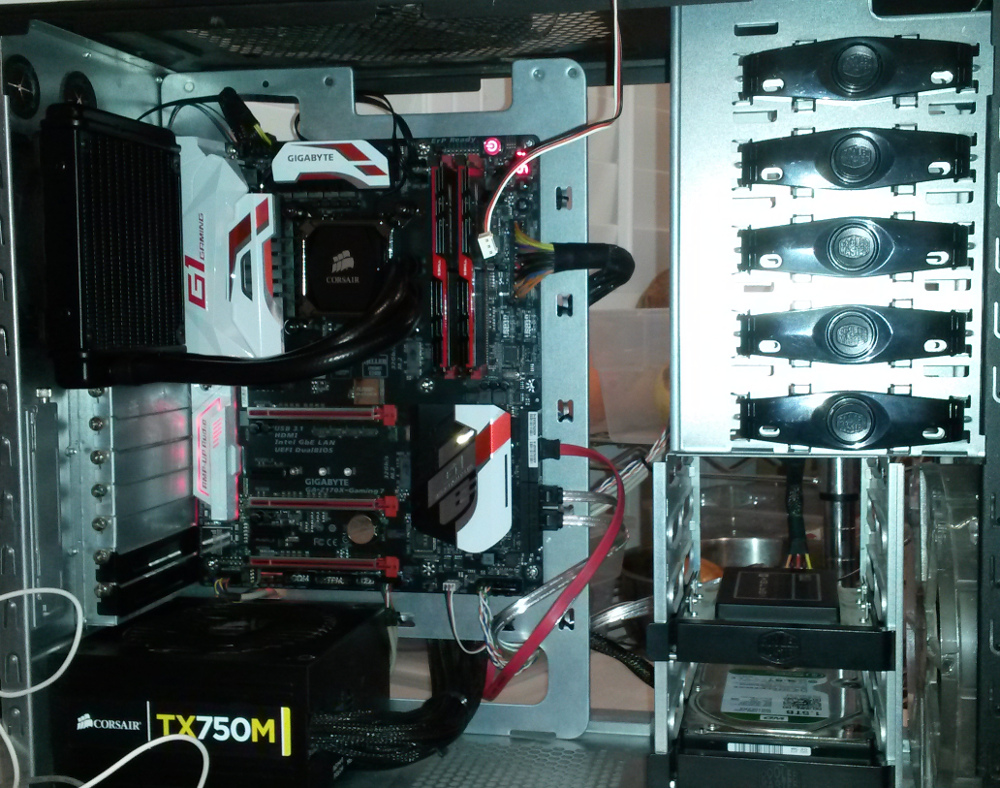2015 complete: A summary in pictures Wed, Jan 6 2016 PM
Happy new year! Its 2016 and I wrote the date correctly on the first try. I've been pretty busy with work and I have not had a moment to update the blog. Usually I post something technical or a feature announcement, but not this time. Enjoy some pictures and projects from 2015!
Springtime garden
Its springtime, lets plant a garden. I grew tomatoes, basil, and cilantro, all from seed. The seeds started out in a covered seed tray before being transplanted outside. Everything in the yard was watered with drip-line irrigation. The drip-line gets the water to exactly where it needs to be, with minimal waste, which also helps to keep the weeds down.
The cilantro
I didn't have much yield with the cilantro. Its basically got too hot and the cilantro quickly went to seed.

The basil
Once the basil filled in (about 30 plants worth). I had consistent and usable amount of basil for several months.
Pictures from left to right: just planted from seed-tray, filled in after several weeks.

Many tomatoes
I planted 25 tomato plants in total in clusters of 5 tomatoes each. Most of the clusters had excellent yields. But boy did they get big, and I ended up pruning them back quite a big. This spring, I will reduce the plant density, and probably get the same yield.
Pictures from top to bottom: sprouts in seed-tray, just planted in yard, and then about a month later.

Water friendly lawn
Southern California has run out of water, and its way to expensive to keep a green grassy lawn. After letting the lawn completely go brown, I started a water friendly lawn project. Not one blade of grass shall remain. Its all rocks, mulch, succulents, and drip-lines for the bushes.
Step 1 (not pictured) was to dig out all of the old grass. I literally moved tons to dirt to bring the level of lawn down from several inches above to about a few inches below the side walk level.
Parts and plants
I purchased 6 ligustrum texanum/japonicum bushes for the front yard (about $13 per pot). One established, this bushes grow-in large, hearty, and can handle months without rain.
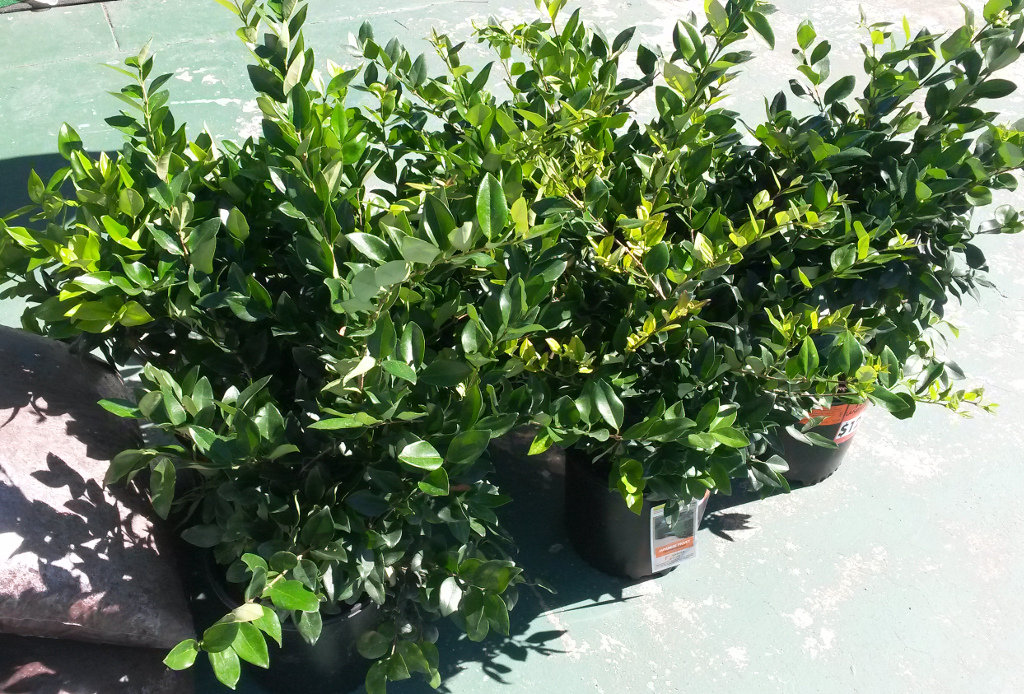
Pictured: Pine beams for the border, 1/2 drip-line, and masonry caulk. The pine beams make a study and colourful border, and they are cheap at $4 per 8 ft. The 1/2 drip-line is for above-ground distribution, and about $1 per 10-ft.
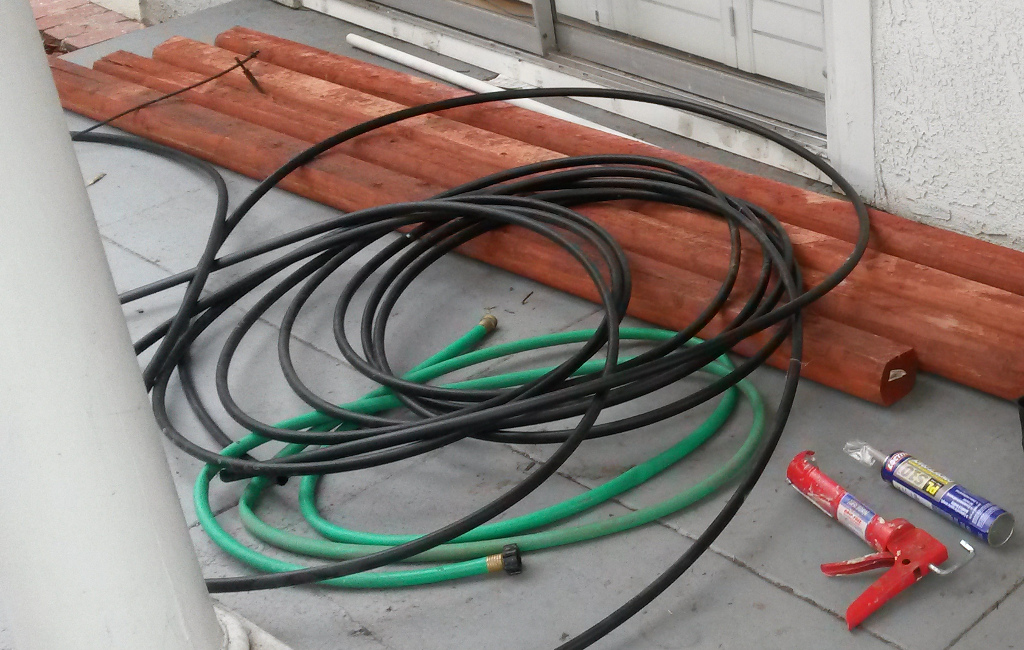
Water distribution
The bushes in the front and the back of the yard will all be on automatically timed drip-line. I had to bury PVC pipes throughout the yard and bring up to 1/2 inch drip-line compression couplers.
Pictured: What's protruding through the mulch is a PVC elbow joint with a 1/2 inch coupler. The above-ground PVC and drip-line will all be hidden by the layer of mulch. The PVC is spray painted black as camouflage, in-case some of it becomes exposed.
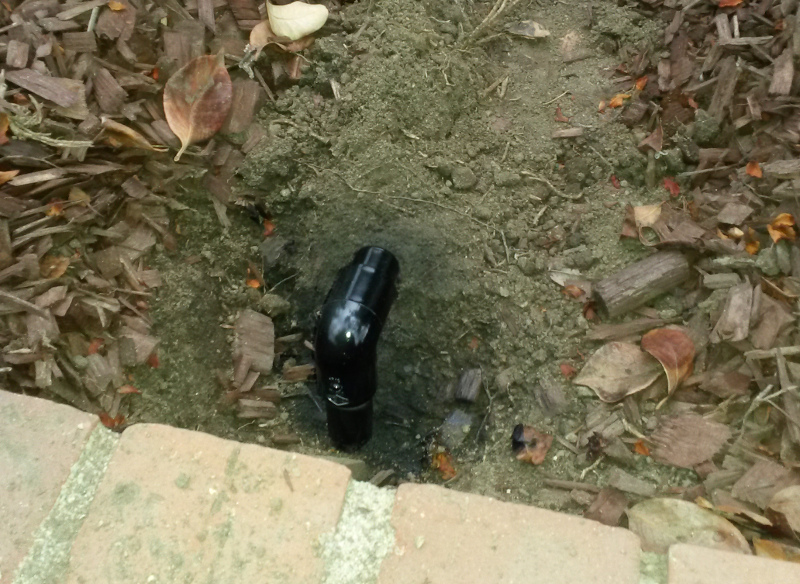
Brick border
I freed up about 30-ft of bricks from previous flower beds to use as a border for where the new bed meets the side-walk. I levelled the ground and tamped down a layer of sand and stone to keep the bricks stable over time. The individual bricks are not mortared together, but rather glued together using masonry caulk. Where mortar would crack, the masonry caulk should allow the bricks to flex with temperature, and while the ground settles. Only time will tell how this holds up. Also pictured is another of the water distribution points.

Planted and mulched
This is one of the two beds. 3 ligustrum, 2 pine beams, bricks, and dyed mulch to top it off. The 1/2-inch drip line is running along-side the bricks directly under the mulch, which an individual drip-emitter and 1/4-inch line for each bush. The bushes look cute and small now, but in a few years the should completely fill-in both width and height-wise.
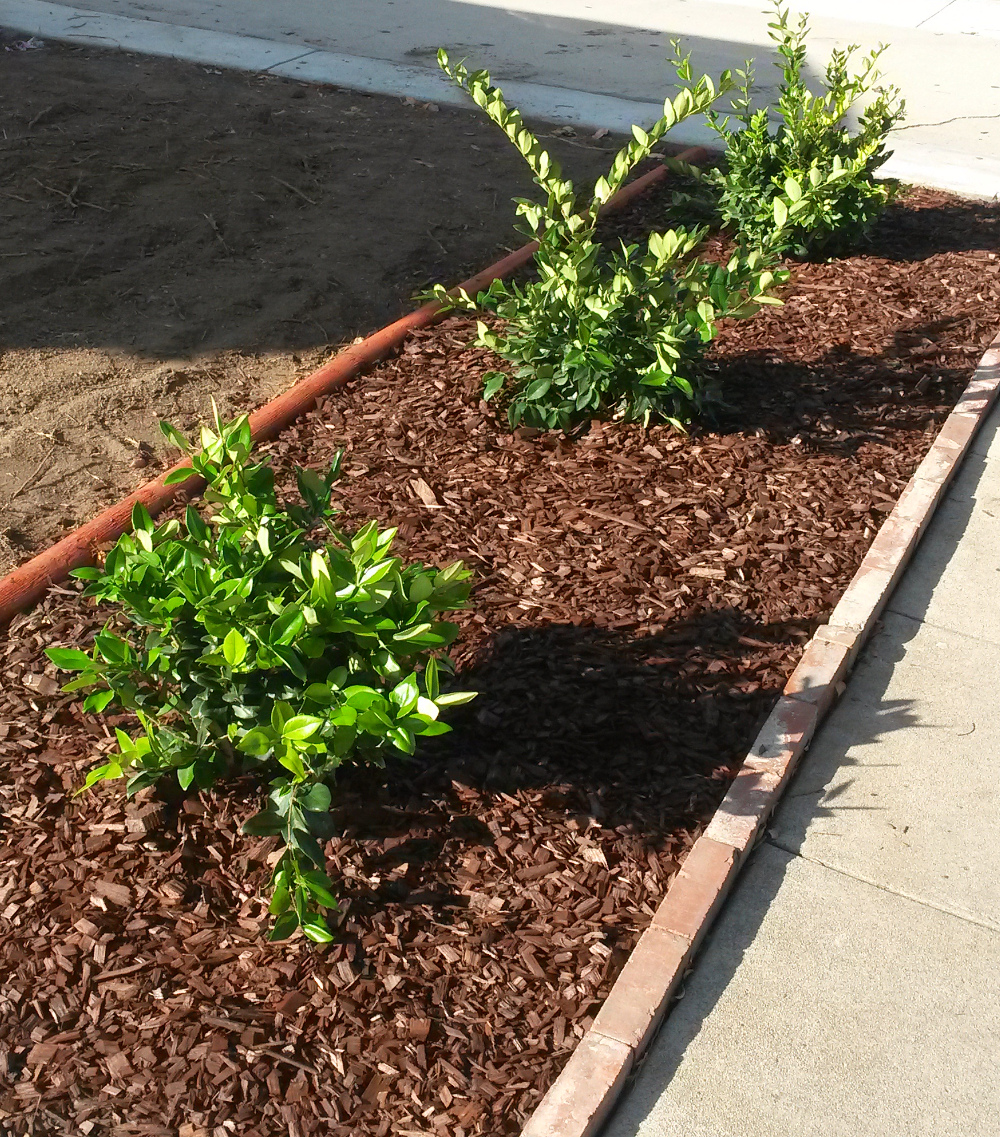
The rest of the front yard will have to wait for 2016 -- I am planning stone and succulent beds.
Stone garden
I replaced a former "dirt" bed with a well-groomed rock garden in the rear of the house. I prefer this to having dirt and plants up against the stucco.
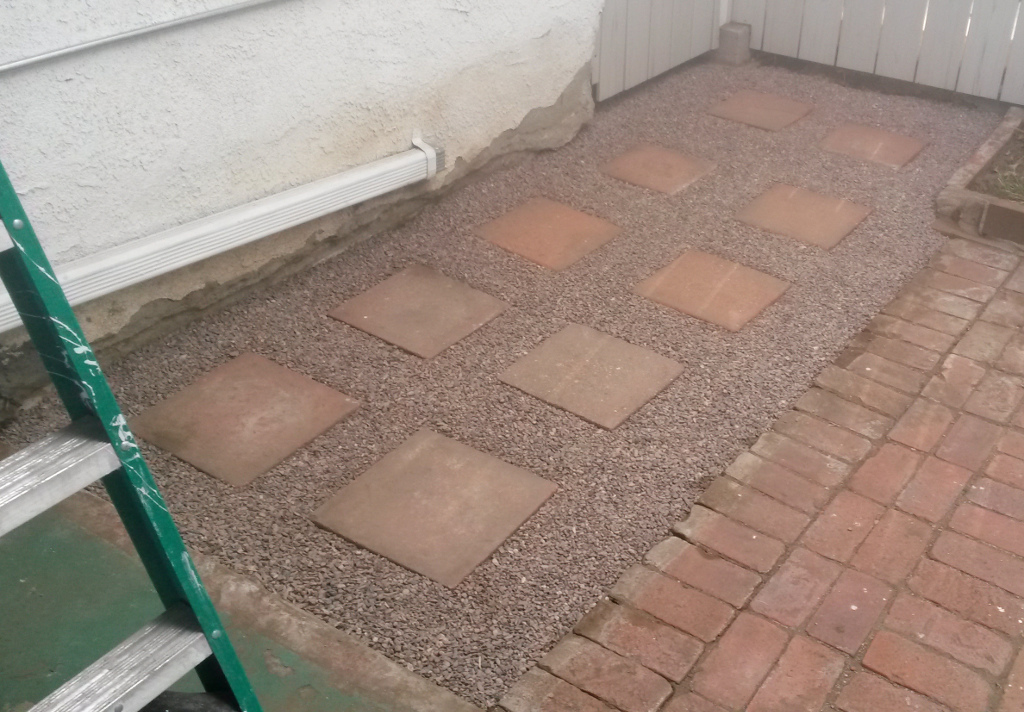
Succulent bed
For the little strip of dead-grass in-between the side walk and the street, I put in a scalloped brick border with a little succulent garden. The ground was tamped, and the bricks were glued just like the brick border above. However, unlike the bushes, this bed has no water distribution: I just give a quick spray with the hose once a week (or more often for really hot weeks).
Pictured: Progression of the bed over time. You can really see the aptenia taking over. Those two plants that look like dried up and dead are now full of leaves, and will have purple flowers this spring. And in the final picture the aloe veras produced a number of pups, and even some flower stalks -- those are happy plants.
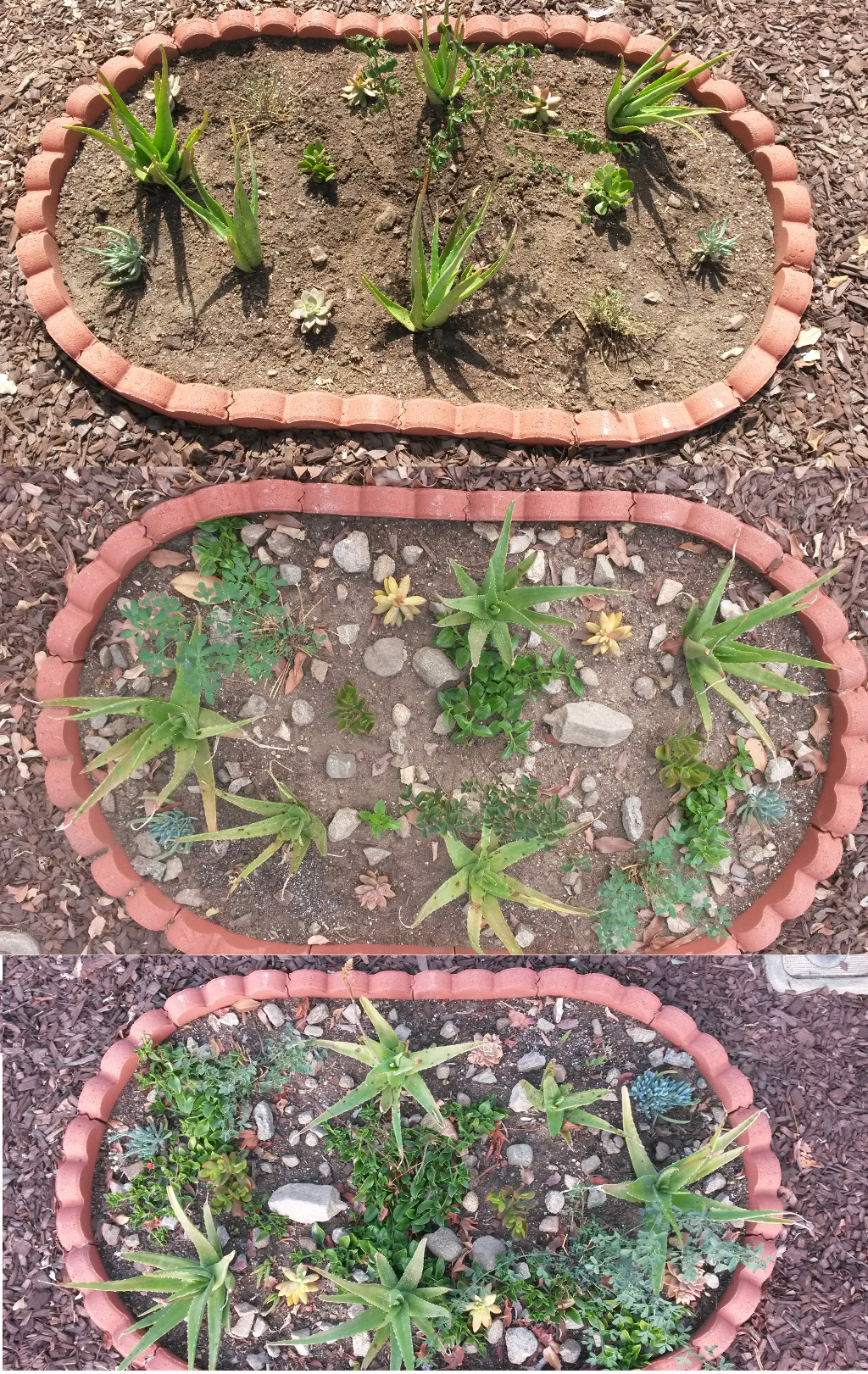
Car odometer
Its always exciting when you catch your odometer spelling out words accidentally.
BOBBS! Close enough...

Happy Halloween
Save money by carving two faces in one pumpkin! You can see that the eye-hole in the derpy-looking pumpkin goes right though the face of the scary-looking one.

Hamsters and GigE
What can we learn about gigabit ethernet from a hamster? Well gigabit ethernet relies on four twisted pairs of wires. When Hammie eats one of those pairs, the link will nicely degrade into 100 Mbps. I could not figure out why the file transfer speed was so slow until I found this:
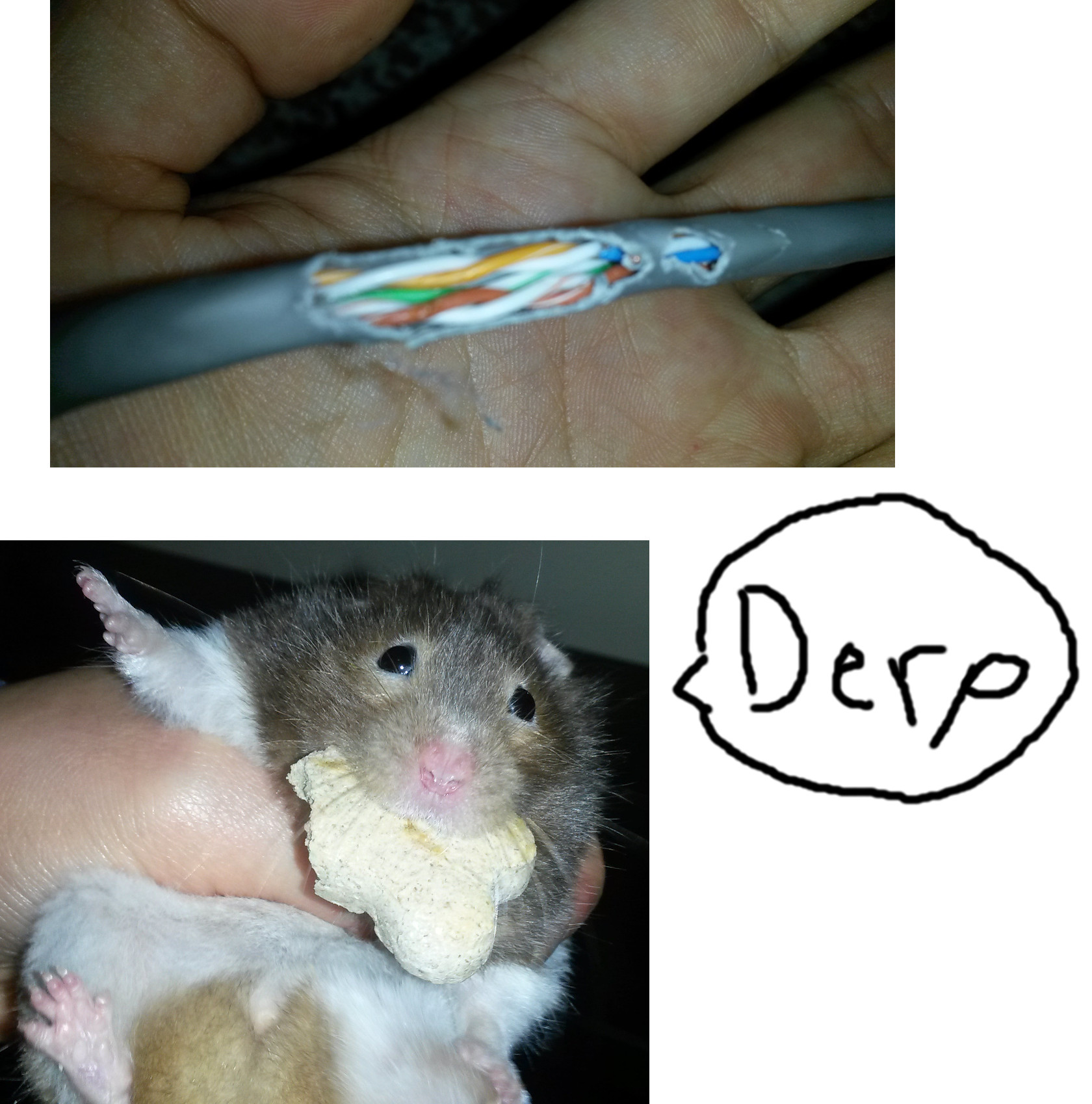
Winter flowers
Most of us imagine that winter is life-less and barren, but in southern California its time for succulents to flower. Here is one of my indoor plants in the process of growing a flower stalk:
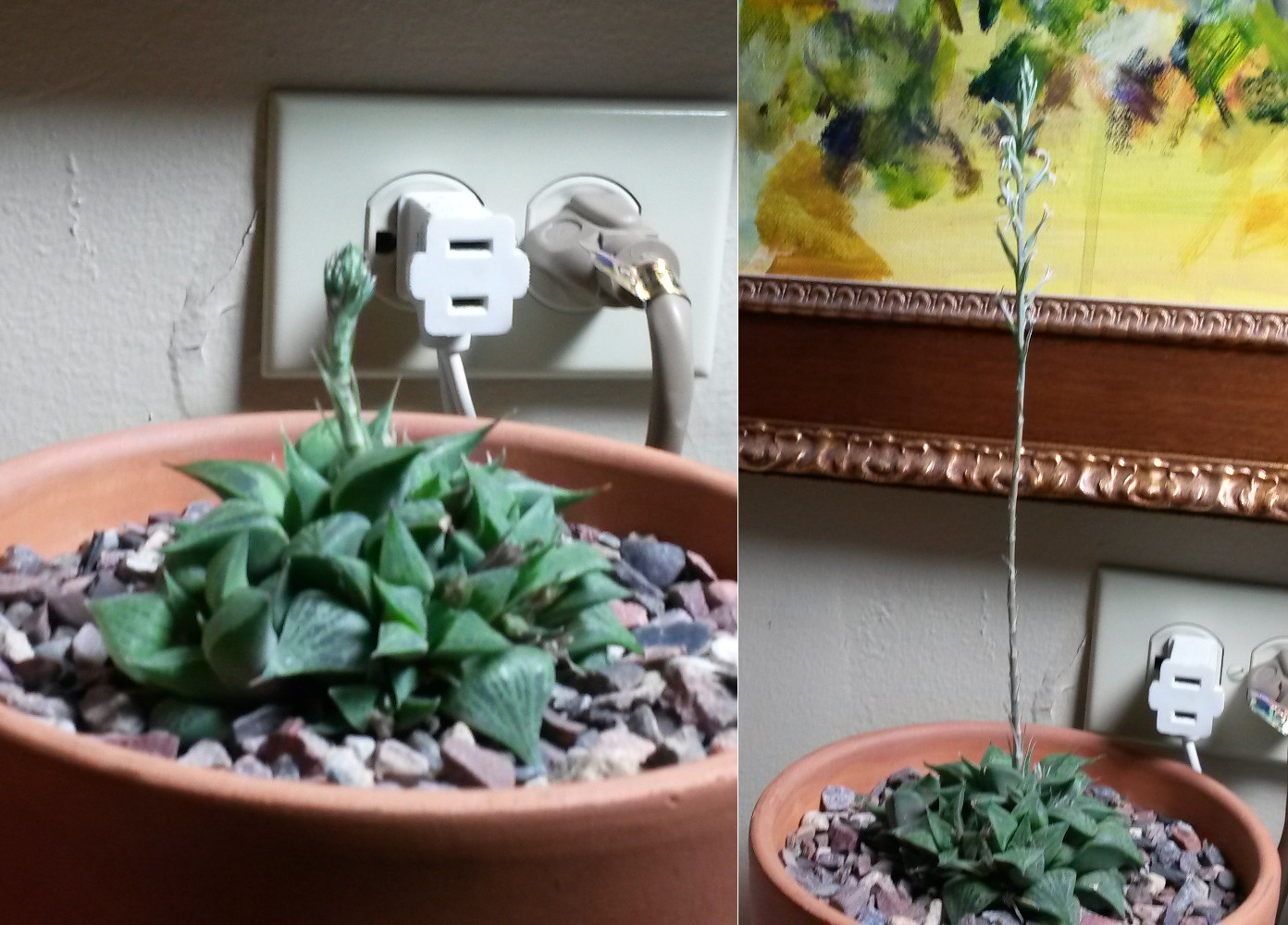
Pictures from left to right: 1) An aloe from the new succulent bed, 2) a plant in the neighbourhood, I think that its a type of Crassula, and 3) a cactus at the San Diego zoo, which has its own unique presentation:
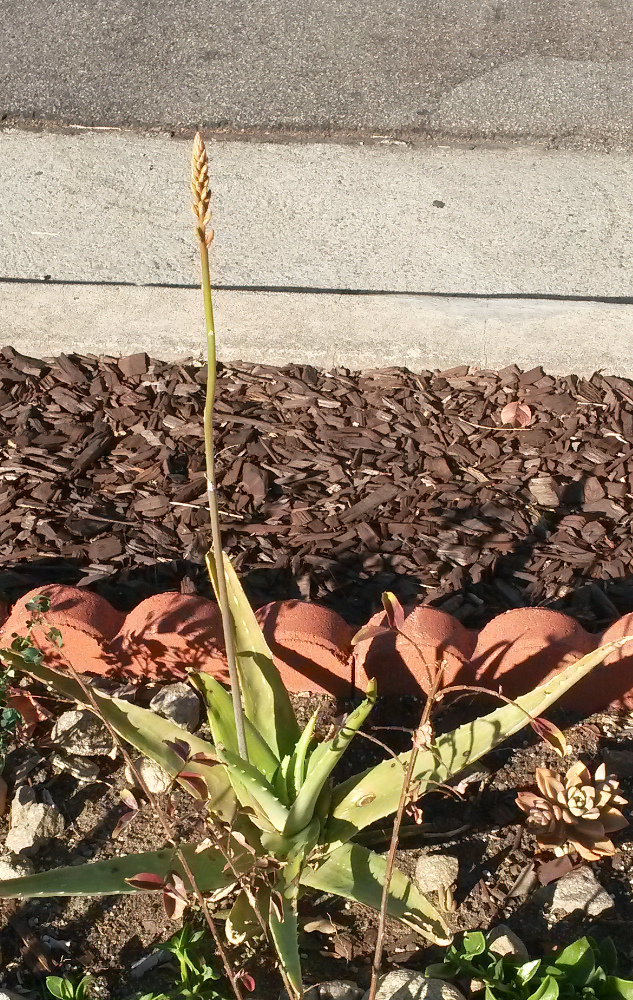
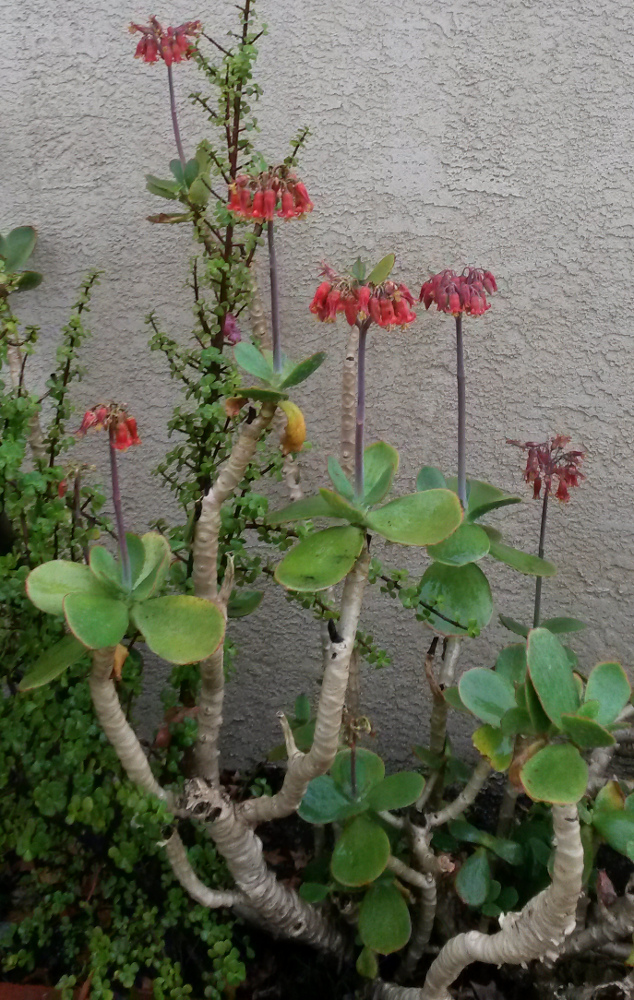

New year, new PC
I am starting off 2016 with a new PC! I was on a "dual" + "quad core" AMD server board setup. It was interesting to have two multi-core processors on a NUMA architecture. But the rig was almost 5-years old and it was time to get a new one.
Also, the server-board may have been a mistake: Terrible on-board graphics, no audio, very few USB connections. Although it did have 3 gigE network connections. All that aside, its been hard for me to get virtualbox VMs to run properly on the AMD hardware.
Pictured: New PC with Intel Skylake 4GHz, 32 gigs of DDD4, and a sweet motherboard with multiple video ports, and all of the USB3 ports that I will ever need. I've never owned a quiet PC before, and this one is dead-silent. I can actually hear the hard drive making its little write sounds.
